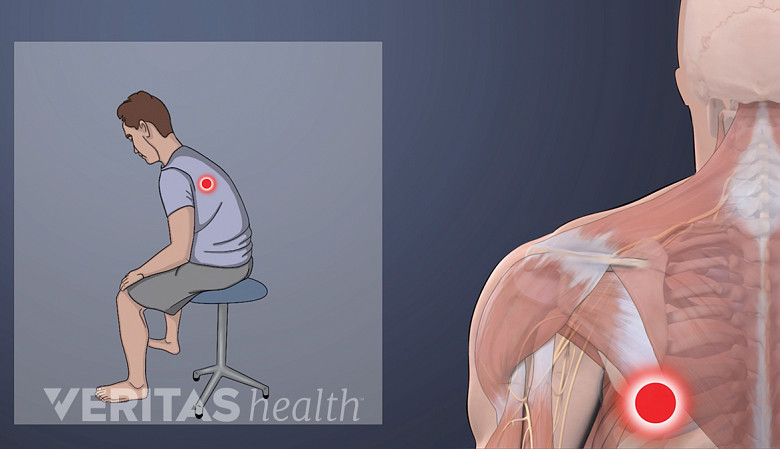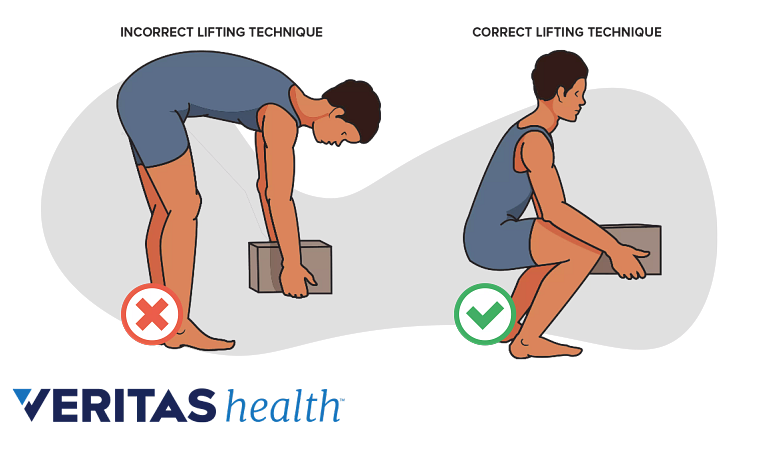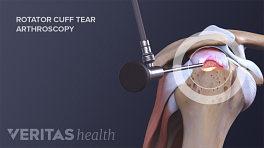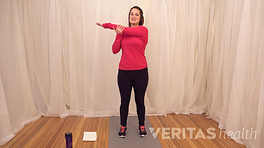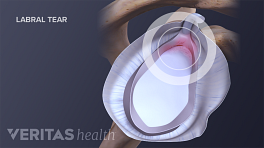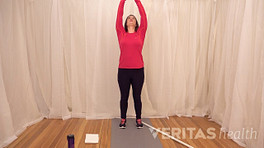Jobs where hours are spent hunched over desks, lifting and carrying heavy packages, or performing repetitive overhead movements – all cause the well-being of the shoulders to take a backseat.
This blog unravels the essentials to avoiding shoulder pain at work – from making small adjustments in posture to employing comprehensive strategies that seamlessly blend productivity and overall well-being.
In This Blog:
The effects of physical labor and desk jobs on shoulder health
Prolonged sitting with an unsupported is a cause for muscle pain.
An estimated 13% to 24% of shoulder pain complaints are work-related. 1 Shanahan EM, Sladek R. Shoulder pain at the workplace. Best Pract Res Clin Rheumatol. 2011 Feb;25(1):59-68. doi: 10.1016/j.berh.2011.01.008 , 2 Chaiklieng S, Krusun M. Health Risk Assessment and Incidence of Shoulder Pain Among Office Workers. Procedia Manufacturing. 2015;3:4941-4947. doi:https://doi.org/10.1016/j.promfg.2015.07.636
Long periods of physical work involving positioning the arms over the shoulder and excessive load on the shoulders are common direct causes of shoulder pain. 3 van der Molen HF, Foresti C, Daams JG, Frings-Dresen MHW, Kuijer PPFM. Work-related risk factors for specific shoulder disorders: a systematic review and meta-analysis. Occup Environ Med. 2017;74(10):745-755. doi:10.1136/oemed-2017-104339
Regular overhead activity is a risk factor for shoulder impingement, which involves constriction of soft tissues such as tendons near the shoulder area.
See Shoulder Impingement Symptoms
Shoulder pain stemming from unsupported work ergonomics often accompanies discomfort in the neck or the upper back and shoulder blade region. Poor ergonomics also leads to shoulder impingement due to muscle imbalance.
Work-related actions disrupt the natural mechanics of the shoulder, causing:
- Muscle imbalances
- Overuse injuries
- Strain on the shoulder joint
- Low back pain
In addition to construction workers, roofers, and office workers, professional athletes, such as tennis players and swimmers, are also at risk of shoulder pain.
As we all experience the effects of gravity and regularly engage with electronic devices, our shoulders tend to shift forward and inward. This posture poses a risk of shoulder pain in almost all occupations, including parenthood.
Shoulder pain in physically demanding jobs
Bending at the hips and knees when lifting minimizes strain on the shoulders.
Evidence suggests that regularly lifting more than 10 lb of weight over the shoulder for 15 minutes or more throughout the day is associated with an increased risk of shoulder impingement. 4 Beach J, Senthilselvan A, Cherry N. Factors affecting work-related shoulder pain. Occup Med (Lond). 2012 Sep;62(6):451-4. doi: 10.1093/occmed/kqs130. Epub 2012 Jul 31. PMID: 22851737.
See Causes and Risk Factors of Shoulder Impingement
Jobs that require constant lifting of one or both arms overhead include wall painting, construction, hairdressing, and carpentry.
Ways to minimize shoulder pain in physically demanding jobs
By implementing ergonomic postures and using mechanical aids when lifting heavy loads, you minimize undue strain on both the shoulder and the entire body.
Maintaining ergonomic form entails:
- Bending at the hips and knees instead of the back to lift the object
- Maintaining the back in a neutral position while lifting the object
- Bearing weight on the legs instead of the upper body
- Avoiding lifting weights above shoulder height
- Avoiding lifting while in an imbalanced position
- Moving the object as close to the body as possible before lifting
- Lifting objects with short levers instead of long levers
- Maintaining a “tucked in the back pocket” position of the shoulder blades
If your occupation involves wall painting or similar jobs, modifying the working techniques so that they are more suited for the task reduces the risk of shoulder injury. 5 Stenlund B, Lindbeck L, Karlsson D. Significance of house painters' work techniques on shoulder muscle strain during overhead work. Ergonomics. 2002;45(6):455-468. doi:10.1080/00140130210136954
For example, when sanding or painting the ceiling, reducing shoulder rotation and working on smaller sections at a time decreases the likelihood of shoulder pain, as opposed to using large and erratic rotating motions.
The use of ergonomic tools, such as mobile elevated work platforms for construction work, reduces stress on the shoulders. 6 Phelan D, O'Sullivan L. Shoulder muscle loading and task performance for overhead work on ladders versus Mobile Elevated Work Platforms. Appl Ergon. 2014;45(6):1384-1391. doi:10.1016/j.apergo.2014.03.007
Shoulder pain while working on a computer
Prolonged or frequent computer or laptop use is often linked to the development of shoulder pain due to repetitive strain injuries. 7 Rodrigues MS, Leite RDV, Lelis CM, Chaves TC. Differences in ergonomic and workstation factors between computer office workers with and without reported musculoskeletal pain. Work. 2017;57(4):563-572. doi:10.3233/WOR-172582
Consistently maintaining a natural and relaxed position while working on the computer is an effective way to reduce the occurrence of shoulder pain.
Ways to minimize shoulder pain while working on a computer
To minimize shoulder pain through ergonomic seated posture, follow these guidelines:
- Keep both feet flat on the floor
- Push your hips toward the back of the chair
- Keep your elbows close to the body below the shoulders
- Keep your forearms, wrists, and hands in a straight line out in front of the body
- Keep the shoulders relaxed by letting the elbows rest on the arms of the chair or surface of the work desk
Additionally, care should be taken to avoid slouching or keeping the shoulders in a shrugged position.
These general principles also apply while using a standing desk. Standing on a softer surface, like an anti-fatigue mat, and wearing comfortable footwear helps maintain an upright position.
Adjustments to the working environment
Modifying the working environment makes it easier to maintain an ergonomic posture throughout the working day. Some examples of modifications include:
- Using a chair with lumbar support
- Adjusting the height of the monitor to maintain a neutral neck position
- Using a footrest to reduce pressure on the thighs
- Using an external keyboard with a personal computer to reduce stress on the shoulders
Additionally, alternating between standing and sitting for a few hours helps reduce fatigue associated with maintaining the same position throughout the day.
Relieve shoulder pain by incorporating breaks and stretching exercises at work
Engaging in shoulder and upper back stretches effectively alleviates shoulder pain and discomfort.
Work-related stress increases pain caused by unsupported posture, highlighting the importance of intermittent breaks to reduce stress. It is recommended to take a short walk or perform stretches during these breaks to improve circulation and aid relaxation.
Similarly, engaging in simple and basic stretches effectively alleviates muscle pain and discomfort.
Performing shoulder exercises, such as shoulder shrugs, shoulder rolls, and shoulder blade squeezes, is a quick and easy way to improve shoulder strength and mobility.
Be mindful of activities that flare up shoulder pain
Work-related shoulder pain can be intensified by activities outside of work that place extra stress on the shoulder joint and muscles. Being mindful of these activities helps minimize stress on the shoulder joint.
- Carrying heavy bags: Carrying heavy bags or hanging a backpack on one shoulder leads to uneven distribution of stresses on the muscles and joints, flaring shoulder pain.
- Unsupported sleeping position: Sleeping on your side without adequate support for the shoulder causes discomfort or pain in the shoulder or flare-up shoulder pain from a previous injury.
- Improper weight training: Improper weight training techniques, such as using excessive weights or incorrect form, contribute to shoulder pain by overloading the shoulder muscles and joints, especially during overhead presses or incorrect lifting. These habits can create impingement syndromes or expose an existing impingement syndrome.
If your shoulder pain worsens or causes concerning symptoms, it's essential to consult a physician specialized in musculoskeletal injuries, who can accurately devise a treatment strategy aimed at addressing the root cause of the issue.
Remember, prevention is key, and the small adjustments you make today lead to significant improvements in your overall well-being tomorrow. Take charge of your work habits, prioritize self-care, and let these insights be your compass toward a more comfortable and productive professional journey.
- 1 Shanahan EM, Sladek R. Shoulder pain at the workplace. Best Pract Res Clin Rheumatol. 2011 Feb;25(1):59-68. doi: 10.1016/j.berh.2011.01.008
- 2 Chaiklieng S, Krusun M. Health Risk Assessment and Incidence of Shoulder Pain Among Office Workers. Procedia Manufacturing. 2015;3:4941-4947. doi:https://doi.org/10.1016/j.promfg.2015.07.636
- 3 van der Molen HF, Foresti C, Daams JG, Frings-Dresen MHW, Kuijer PPFM. Work-related risk factors for specific shoulder disorders: a systematic review and meta-analysis. Occup Environ Med. 2017;74(10):745-755. doi:10.1136/oemed-2017-104339
- 4 Beach J, Senthilselvan A, Cherry N. Factors affecting work-related shoulder pain. Occup Med (Lond). 2012 Sep;62(6):451-4. doi: 10.1093/occmed/kqs130. Epub 2012 Jul 31. PMID: 22851737.
- 5 Stenlund B, Lindbeck L, Karlsson D. Significance of house painters' work techniques on shoulder muscle strain during overhead work. Ergonomics. 2002;45(6):455-468. doi:10.1080/00140130210136954
- 6 Phelan D, O'Sullivan L. Shoulder muscle loading and task performance for overhead work on ladders versus Mobile Elevated Work Platforms. Appl Ergon. 2014;45(6):1384-1391. doi:10.1016/j.apergo.2014.03.007
- 7 Rodrigues MS, Leite RDV, Lelis CM, Chaves TC. Differences in ergonomic and workstation factors between computer office workers with and without reported musculoskeletal pain. Work. 2017;57(4):563-572. doi:10.3233/WOR-172582
